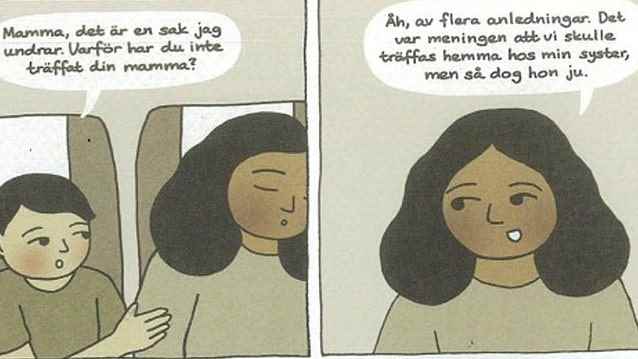Comic book
Lisa Wool-Rim Sjöblom
“The excavated earth”
Galago, 176 pages
Show more
“Your son is going to spend the night in the dorm with the other babies.” The year is 1977, a couple of years into the dictatorship, and the site is a hospital in Temuco in the southern part of Chile. A white-clad nurse takes the newborn boy, and her backboard disappears into the long perspective of the central perspective. In the distance a door to the darkness, he is gone. Then the short prologue closes, and half a life should separate mother and son.
“The Excavated Earth” by Lisa Wool-Rim Sjöblom is a documentary comic book story dedicated to all the first mothers who have been erased in various ways from the story of happy adoptions of “abandoned” children in poor countries. At the center is Maria Diemar, who through inconsolable investigations learns that her mother did not leave her voluntarily at all and that she is one of the thousands of cases in the Chilean adoption scandal that has been rolled out in the media in recent years, including in DN’s article series “Children at all costs”.
So we’re talking on fraud, intimidation, ill-treatment and pure kidnapping, not infrequently targeting economically disadvantaged families from Chile’s indigenous people. The little boy at the hospital in Temuco, who was declared dead only a day old, is Maria’s adoptive brother. His mother never got to see his body, because it did not exist – but was about to be transferred to new parents in a new country.
This is a book that should be read together with Lisa Wool-Rim Sjöblom’s autobiographical debut from 2016, which depicts the author’s own experience of a corrupt and false adoption process in Korea. “Palimpsest” can best be described as a revelation of concentrated, poetic pain and as a shaking and existential experience, it is possibly difficult to live up to.
“The Excavated Earth” takes the scandalous on, to the public, and is basically a story of hard work and warm fellowship, in the midst of grief over all that has been lost. With his collective and activist approach, the sequel becomes in many ways a logical next step, both literary and human. We meet more people, follow more threads, feel the breadth of the crime – but the effect is also a greater distance from a purely narrative point of view.
There is also a kind of gloomy folk home tone in an earthy and rusty color scale that brings to mind children’s books in the Swedish folk home’s seventies
Lisa Wool-Rim Sjöbloms greatest strength, however, is that she really knows the essence and possibilities of the comic book medium. The chubby and a bit naive drawing style is recognizable from the debut, and conveys a soft and questioning vulnerability in the middle of the rage. At a crucial moment, one of the main characters falls through the black in the grid of the pages, the earth beneath him is gone and there is nothing to receive.
There is also a kind of gloomy folk home tone in an earthy and rusty color scale that brings to mind children’s books in the Swedish folk home’s seventies – that is, the time and place whose demand was an important part of the very premise for children to be stolen and shipped around. merchandise. It is an aesthetic grip that underlines the dominant feeling in the reading of “The excavated earth” – that this is a book that actually makes Sweden another country.
Read more texts by Kristina Lindquist and more reviews of current books in DN Kultur.
